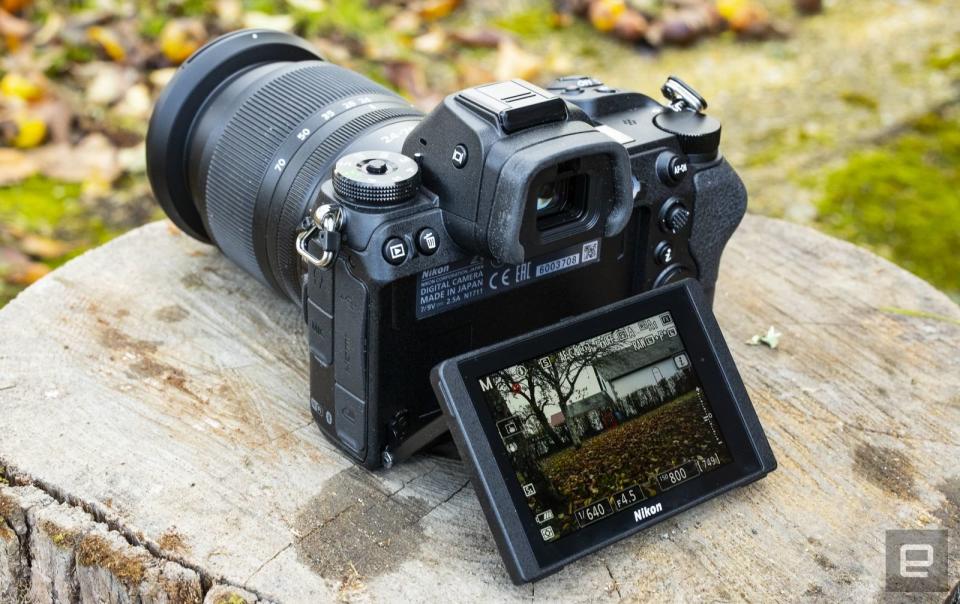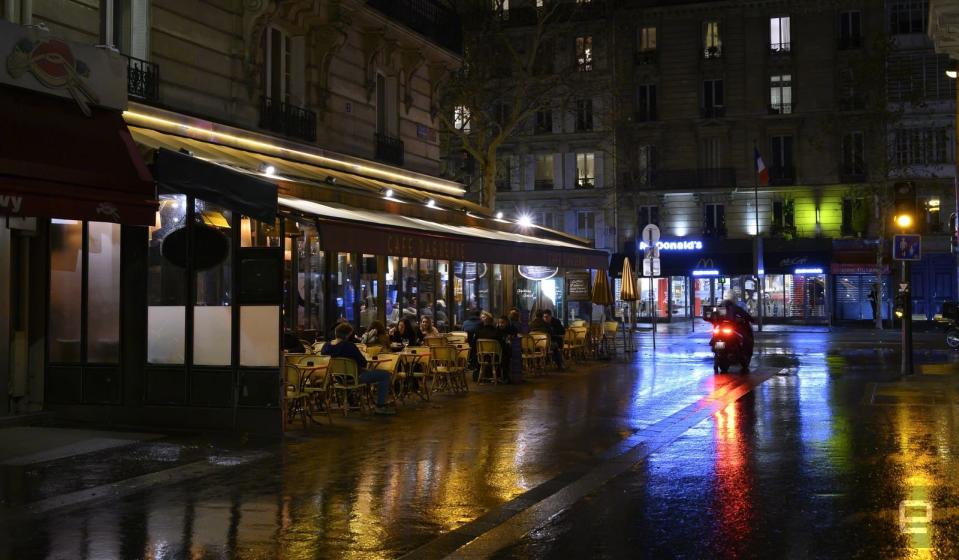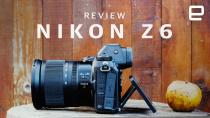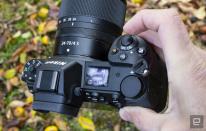Nikon Z6 review: The best full-frame mirrorless camera for video
10-bit external video, in-body stabilization and a full sensor readout.
When Nikon launched its two all-new full-frame mirrorless cameras, it was laying down a challenge to Sony. The landscape- and portrait-oriented 45.7-megapixel Z7 strongly resembles Sony's superb, 42.4-megapixel A7R III. Meanwhile, the model we're looking at today, the 24.5-megapixel Z6, looks a heckuva lot like the world-beating 24.2-megapixel Sony A7 III. Both Z-Mount cameras cost nearly the same as their Sony counterparts and pack similar features, like in-body stabilization and full-sensor 4K video. This is obviously not a coincidence as Nikon is trying to disrupt Sony's mirrorless dominance. Does it succeed with the Z6? It isn't perfect, but in a couple of areas, Nikon has actually bested the current full-frame mirrorless champ. The Z6's body, button layout and menu structure are identical to the Z7, which I covered in the last review. The TL;DR is the same, though: These cameras have great ergonomics. The Z6 packs a weatherproof body and large grip that DSLR shooters -- particularly pros with big, heavy lenses -- will appreciate. At the same time, it's considerably smaller and lighter than comparable DSLRs like Nikon's own D850 or D750. That means it can serve as a street, tourism, photography or landscape camera. All the controls, from the power switch to the focus point joystick, are just where you need them. If you're used to Nikon cameras, you'll be right at home. Perhaps the only black mark is on the menu system, which I found a bit too complex. You have to do a lot of scrolling to find certain items, and they're not always where you'd expect them. Your best bet is to program the Q menu and buttons so you rarely need to dive into the menus. As for the electronic viewfinder (EVF), it's excellent, providing a clear image thanks to the 3.69 million dot, 0.8 times magnification OLED display. However, the 60 Hz refresh rate is lower than rival cameras and creates some lag while in use. As with the Z7, when you're shooting in bursts, it often has trouble keeping up with the camera. Perhaps the biggest negative with the Nikon Z6, as with the Z7, is the lack of dual card slots. Nikon likely decided to stick to a single slot to hit the $2,000 price point, but its chief rival, Sony's A7 III, does have two SD cards (though only one is the faster UHS II variety). Nikon also elected to go with more exotic XQD cards, which offer higher speeds of up to 400 MB/s, but are both more expensive and harder to find. You'll have another option later, though, as Nikon will support CFExpress cards down the road via a firmware update, offering even more speed. As I mentioned in the Z7 review, if you decide to buy a Z6 or Z7, you're not just buying a camera but jumping into an entirely new camera system. And thanks to the large mount diameter and short flange distance, Nikon can build sharper, faster and lighter Z-Mount lenses than it could with its DSLRs. Right now, however, it doesn't have a great selection, with just three models: the 24-70mm f/4 S zoom, wide-angle 35mm f/1.8 S and standard 50mm f/1.8 prime. Luckily, by 2020 it will have 13 Z-Mount lenses, including the insanely fast Nikon 58mm Noct-Z manual mount lense that's coming next year. If you need better lenses today, you can always purchase the $250 FTZ adapter and use any of Nikon's current F-Mount glass with varying degrees of compatibility. Newer lenses have more features, like metering and autofocus, enabled. Considering that it has nearly half the resolution of the Z7 (and thus a quarter the bandwidth needs), it's surprising that the Z6 suffers some of the same performance issues. Burst-shooting speeds are a bit faster (12 fps compared to 9 fps), but still only 5.5 fps with continuous autofocus enabled. With much smaller file sizes on the Z6, however, you can at least capture more frames before the buffer fills (47 compared to 26 JPEGs). That's still a fraction of the 163 frames you can capture with Sony's A7 III, however. The Z6 matches the Z7 in other ways, too. Autofocus works great as long as your subject doesn't move around much. During action shooting, though, the tracking system can lose the subject and focus on the background instead, ruining the shot. To me, it feels like the Z6 has slightly faster AF performance than the Z7, possibly because there are only 273 phase- and contrast-detect points instead of 497. Still, you'll occasionally lose your subject, especially with automatic tracking instead of center point autofocus. As with the Z7, the EVF occasionally blanks out when you shoot in bursts, making it nigh-on impossible to follow fast-moving subjects. For subjects that don't move around much, autofocus works very well. Unfortunately, Nikon doesn't offer eye-tracking autofocus, so if you're shooting wide open with a narrow depth of field, you may end with in-focus noses and out-of-focus eyes. And unfortunately for Nikon, Sony's A7 III has set a high standard with uncannily accurate eye-tracking focus. Eye-detection on the EOS R isn't as good, but at least Canon has the feature. Other aspects of the Z6 are top notch, however. The in-body stabilization (which Nikon calls vibration reduction or VR) rivals and even beats the A7 III in some cases because the larger mount gives it more room to work. And of course, Nikon's other main full-frame mirrorless competition right now, the Canon EOS R, doesn't have in-body stabilization at all. So Nikon Z6 photographers get the benefit of stabilization with any lens, including F-Mount or manual focus models like the aforementioned Noct-Z f/0.95. Battery life is also very good. While Nikon claims a mere 310 shots per charge when using the EVF and 380 with the rear display, I found I was easily able to get between 600-700 shots on a charge. You can shoot 85 minutes worth of video, which is already pretty respectable (you're lucky to get 45 minutes with Blackmagic's Pocket Cinema Camera 4K) but again, I found I could go for longer than that -- up to two hours. Should you need to shoot for longer, a battery grip is in development, and you can charge while shooting via the USB-C port. The Z6 has a similar sensor to the Z7 but with lower resolution and an anti-aliasing filter. That means that while images aren't quite as sharp as its much more costly sibling, the Z6 does have better low-light performance. (The lower resolution also helps video; more on that in a second.) I found I could shoot at night at ISO 12,800 without sweating too much about excessive noise and still get usable images at up to ISO 25,600 on RAW images with some post-processing. That kind of range gives you lots of options when shooting at night, especially if you don't have a really fast lens -- and you won't if you only have Nikon's native Z-Mount lenses. Overall, the Z6 is one of the best full-frame low-light cameras out there, bested only by the A7 III, and Sony's 12.2-megapixel low-light champ, the A7S II. As with other Nikon cameras, I found the colors to be accurate and images crisp and sharp with few artifacts. Skin tones are especially good, which is something you'd expect from a brand widely used by professional photographers. You can shoot in RAW with up to 14-bits per color, and even all the way up to ISO 6400, you've got room to tweak shadows and highlights in Lightroom and other image editors. 12 stops of dynamic range helps tame images shot on sunny days or other extreme dark/light contrasty situations. Overall, image quality is nearly on par with Sony's A7 III, which is a high compliment for a brand-new camera. Another area where Nikon kind of copied Sony -- and was smart to do so -- is in video. Much like the A7 III compared to the A7R III, the Z6 actually has better video capability than its more expensive Z7 sibling. That's because the Z6 can do a full readout of the sensor and supersample it, resulting in exceptionally sharp 4K video. The Z7, on the other hand, does some line-skipping at full frame, so you need to crop to APS-C to get the sharpest possible video -- exactly like the A7R III. With the Z6, you not only get sharper video but can benefit from the full-frame sensor's excellent low-light capability and shallow depth of field. That makes it more practical as a documentary or cinema camera as you won't need tons of lights to shoot at night nor fast lenses to make your subjects stand out against their backgrounds. It actually bests the A7 III in a key area: offering 10-bit, 4:2:2 log video output to an external recorder. That gives you more dynamic range (and colors) to work with in post-production, especially if you're shooting in tricky lighting. It can also handle slow-motion at up to 1080p 120 fps, but unlike the A7 III, it has to crop down to APS-C to do that. Finally, the Z6 (and Z7) offer separate exposure settings for video and photos and let you define custom i-menus for each. That's key because video and photography are two completely different disciplines and separate settings make it easier for folks (like me) who switch back and forth. Despite the autofocus system's fussiness when tracking subjects for photos, the Z6 has excellent AF video capability. It's not quite as good as Canon's Dual Pixel system, but I think it's just as good as Sony's offer on the A7 III. And unlike the Canon EOS R, the Z6 has in-body stabilization, making hand-held shooting a bit easier, especially for non-professional users. It also makes it easier to use with non-stabilized Nikon lenses and even the manual non-electronic models popular with cinematographers. On the downside, the rear touch display on the Z6 can only be tilted up or down and not rotated around. That makes it impractical for vloggers or one-man-band video operations, unfortunately. Canon's rival EOS R does have a fully articulating screen as do Panasonic's popular GH5/GH5s models. Another issue is manual focus. The Z6 has a focus-by-wire system, so moving the focus ring a set distance won't consistently change the subject focus. That makes it impossible to set lens marks based on where your actors are standing, for instance, and pull focus to follow them. (Nikon lenses also focus backwards from other systems, but that's another story.) Luckily, most cinema lenses are manual focus only, so the focus-by-wire problem doesn't apply there. And Nikon does at least offer focus peaking when you switch to manual mode, so you can quickly see which parts of a shot are sharp. Bear in mind that you can't use it at the same time as highlight peaking, however, for some reason. This bug or oversight seems like it could be fixed in firmware, so I hope Nikon does that. While the Nikon Z6 does have both microphone and headphone ports for pro shooters, there is one issue. The pre-amp isn't particularly good, so if you have a microphone with a weak output level (read: something cheap you'd find on Amazon), you'll have to boost the camera's signal, which adds a lot of noise. Most importantly, I was very happy with the video I shot with Nikon Z6. With full-frame super-sampling, it's incredibly sharp, and Nikon's color science makes it a great people-shooting camera for interviews, short films, etc. Thanks to the big sensor, it also delivers usable images at ISOs up to 25,600, giving shooters the option to use natural lighting, even in dark conditions. Nikon just has to fix a few things (mainly the audio and touchscreen), and they'll have a near-perfect mirrorless camera for video. With the Z6, Nikon set out to beat Sony at its own mirrorless game. While it didn't quite succeed at that, it's still an impressive debut. The A7 III does have better autofocus performance and also edges the Z6 in image quality, especially in low-light situations. For the foreseeable future, Sony has a much better selection of native lenses, too. However, the Z6 is actually a better handling camera. And it edges the A7 III in video, offering comparable features, autofocus and video quality, but adding 10-bit 4:2:2 video via the external HDMI output. And while both cameras have in-body stabilization, Nikon's camera might have a slight edge there, too, thanks to the larger mount. Nikon's lens selection is limited so far, but the potential of the Z-Mount is huge. One of the next models will be the Noct-Z model with a stellar f/0.95 aperture, and Nikon will have 13 lenses in total by 2020. The A7 III and Canon EOS R are the Z6's biggest competition for mirrorless full-frame cameras, at least for now. Panasonic will soon be releasing its own full-frame mirrorless cameras. Adopting roughly the same strategy as Nikon and Sony, it will launch 24- and 47-megapixel models, the S1 and S1R, respectively. If the GH5 and GH5s are anything to go by, they should be great for both video and photography, so if you're not in a hurry, it might be worth waiting. If you're willing to shoot with a smaller sensor, consider Fujifilm's excellent $1,500 X-T3, which is the world's best APS-C mirrorless camera, I believe, especially for video. Another great option for videographers is the Panasonic GH5, which handles audio better than the Z6 and has more options (like 4K 60p) for video.
Body
Performance
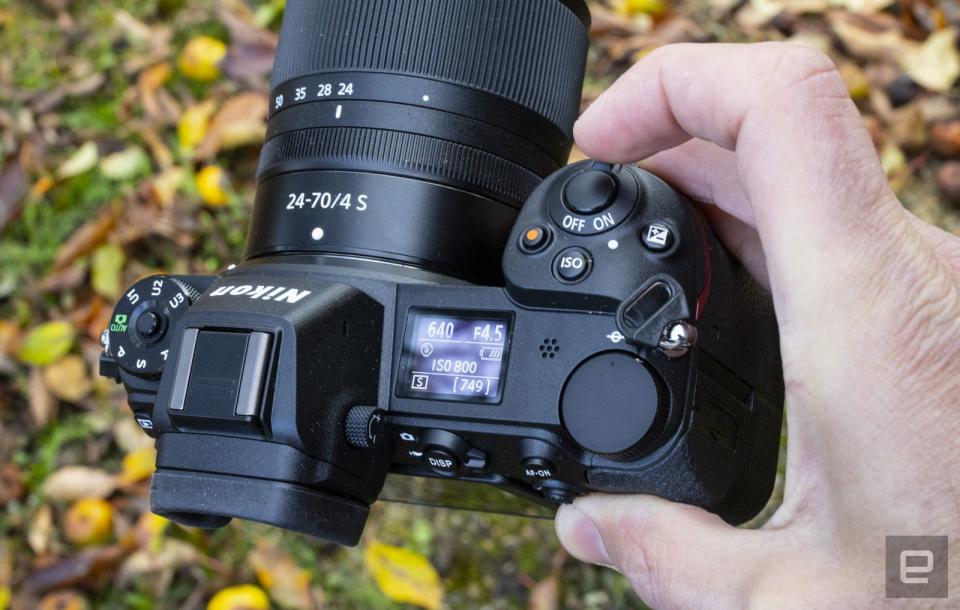
Image Quality

Video
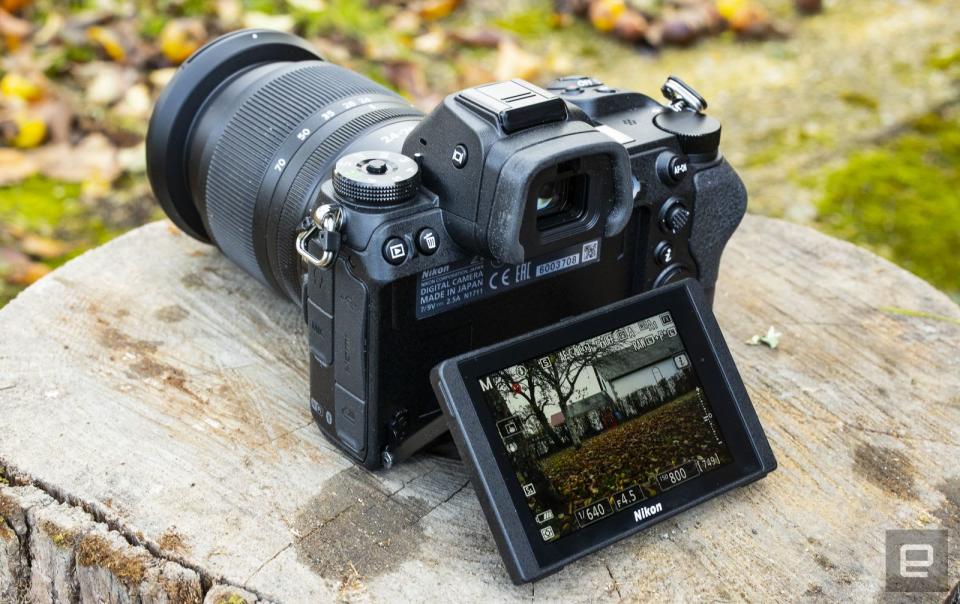
Wrap-up






